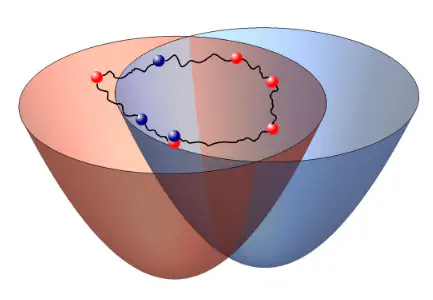Quantum‐classical Path Integral Evaluation of Reaction Rates with a Near‐equilibrium Flux Formulation

Abstract
Quantum-classical formulations of reactive flux correlation functions require the partial Weyl-Wigner transform of the thermalized flux operator, whose numerical evaluation is unstable because of phase cancelation. In a recent paper, we introduced a non-equilibrium formulation which eliminates the need for construction of this distribution and which gives the reaction rate along with the time evolution of the reactant population. In this work, we describe a near-equilibrium formulation of the reactive flux, which accounts for important thermal correlations between the quantum system and its environment while avoiding the numerical instabilities of the full Weyl extendash Wigner transform. By minimizing early-time transients, the near-equilibrium formulation leads to an earlier onset of the plateau regime, allowing determination of the reaction rate from short-time dynamics. In combination with the quantum-classical path integral methodology, the near-equilibrium formulation offers an accurate and efficient approach for determining reaction rate constants in condensed phase environments. The near-equilibrium formulation may also be combined with a variety of approximate quantum-classical propagation methods.